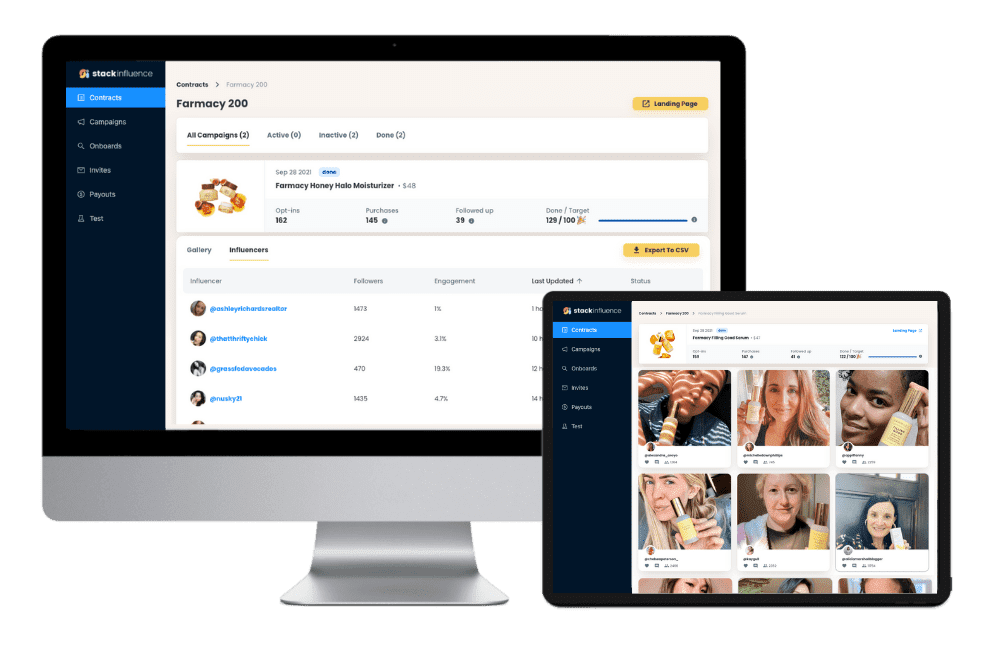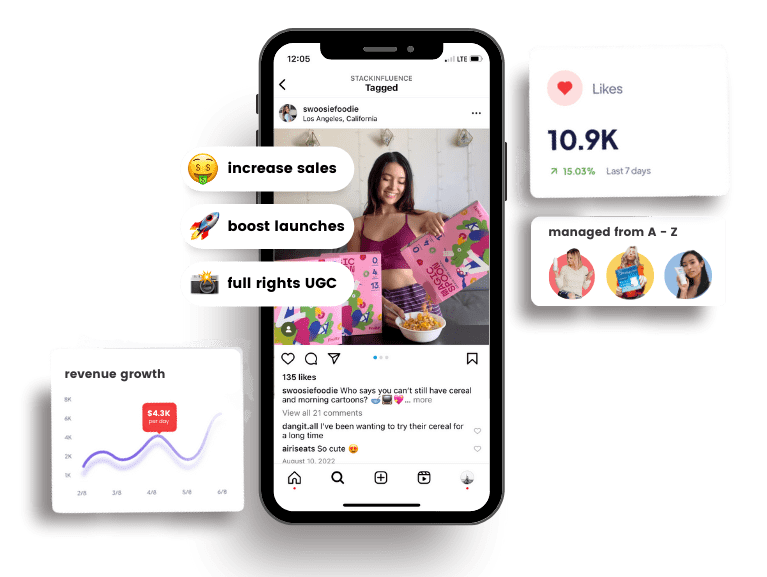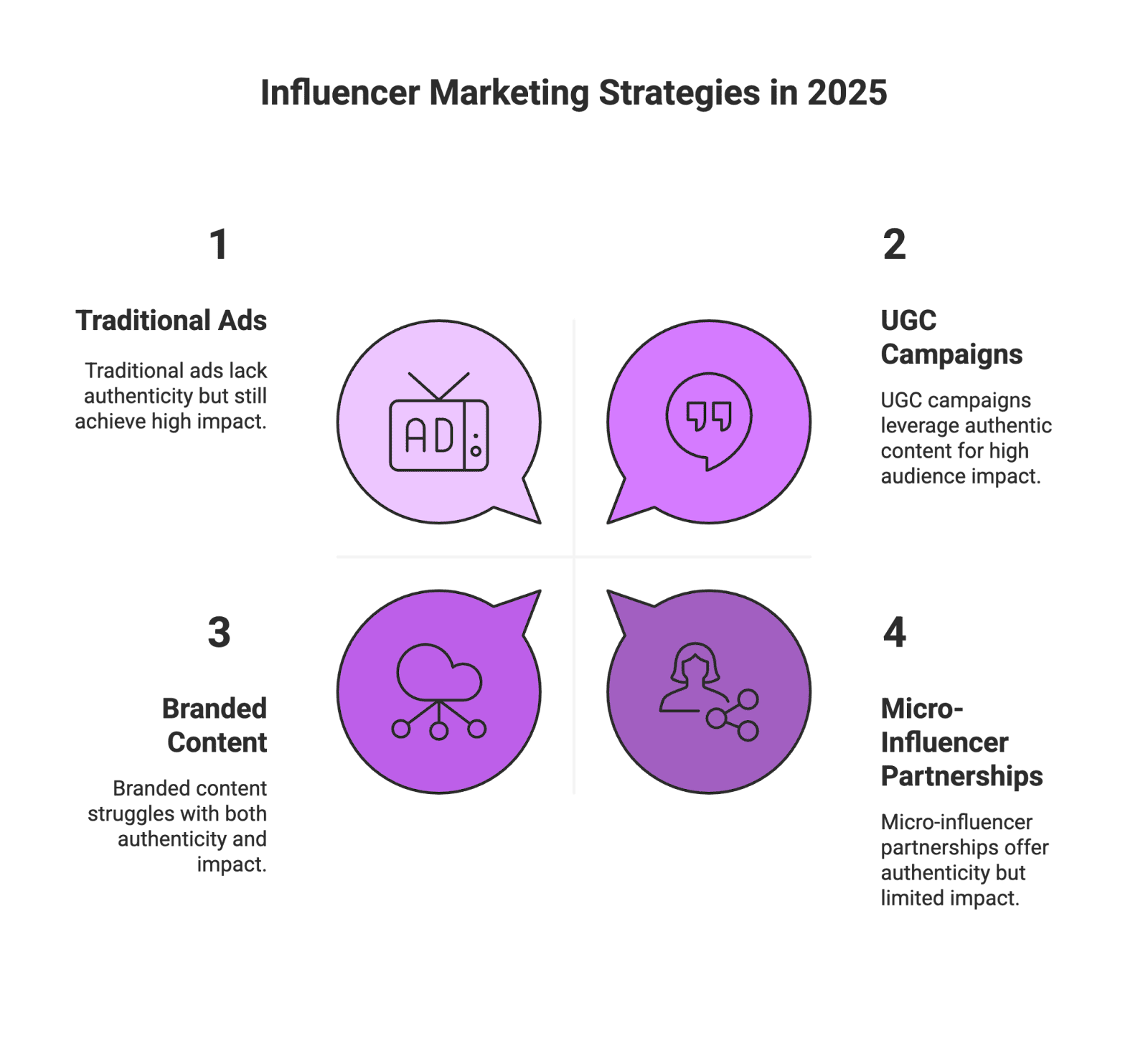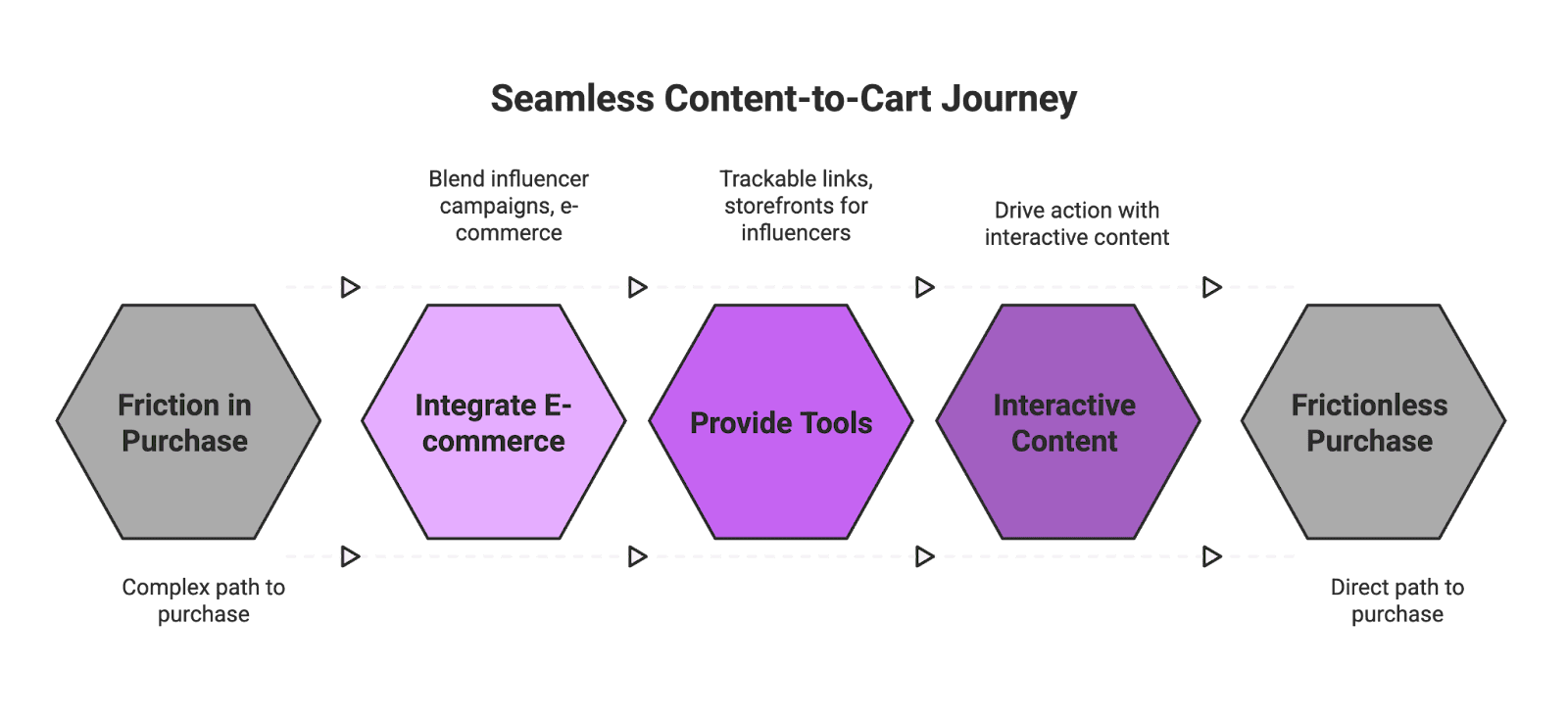B2B Influencer Marketing Trends to Watch in 2025
13th
August, 2025
Influencer Marketing
Amazon Marketplace
Artificial Intelligence
TikTok Tips
Influencer marketing isn’t just for trendy consumer brands anymore – B2B companies are now fully embracing influencers as a core part of their marketing strategy. In fact, the entire influencer marketing industry has seen explosive growth going into 2025, proving this once-niche tactic is now mainstream. Marketers have realized that partnering with the right content creators can humanize their brand, build trust with audiences, and even drive direct sales. Below, we break down the top B2B influencer marketing trends to watch in 2025 – from the rise of micro-influencers and UGC to AI and social commerce integration – to help e-commerce brands and Amazon sellers stay ahead of the curve.
Global influencer marketing spend has skyrocketed in recent years. As shown above, the industry’s global market size jumped from about $9.7 billion in 2020 to over $32.5 billion in 2025, reflecting a 35%+ annual surge in investment. Over three-quarters of marketers now dedicate part of their budget to influencer campaigns, solidifying influencer collaborations as an essential marketing channel rather than an optional experiment.
1. B2B Influencer Marketing Goes Mainstream
Just a few years ago, influencer marketing was often considered a B2C play, but 2025 marks the year it becomes table stakes in B2B. Recent surveys show 81% of B2B marketers now have dedicated influencer marketing budgets, and more than half plan to increase those budgets further. An additional 9% of B2B firms are launching influencer programs for the first time in 2025. This surge in adoption means nearly every B2B brand – from software companies to manufacturers – is exploring influencer partnerships to complement their traditional marketing.
Why the growing commitment? B2B decision-makers, like consumers, are active on social platforms and increasingly trust industry experts and creators over direct brand messaging. Partnering with respected voices in your niche can build credibility faster than corporate ads. Key benefits of B2B influencer marketing include:
- Faster trust-building by leveraging credible voices and thought leaders.
- Niche reach and visibility in specific industry verticals or communities.
- Higher engagement with targeted audiences who resonate with the influencer’s content.
B2B brands are shifting from one-off sponsorships to more integrated, long-term influencer strategies. Rather than a single paid post, companies co-create webinars, whitepapers, podcasts, or video series with influencers who are subject-matter experts. This long-term, relationship-driven approach pays off: brands investing in ongoing influencer partnerships see higher ROI and stronger buyer trust. In short, influencer marketing has matured into a reliable B2B marketing channel, not a gimmick – and ignoring it is no longer an option if you want to remain competitive.

Unlock the Power of Micro Influencers and Elevate your Brand Today!

2. Micro-Influencers and Nano-Influencers Lead the Way
Bigger isn’t always better when it comes to influence. In 2025, micro-influencers (creators with tens of thousands of followers or less) and even nano-influencers (a few thousand followers) are emerging as the real power players – especially for e-commerce brands and Amazon sellers looking to maximize impact on a budget. These smaller-scale creators may have fewer followers, but their audiences are highly engaged and trust them like a friend.
Studies show that micro and nano influencers often deliver far stronger engagement rates and conversion rates than macro influencers with huge followings. For example, one analysis found Instagram nano-influencers (under 5k followers) average about a 2.5% engagement rate, compared to roughly 1% for micro-influencers over 10k followers. In practical terms, this means a smaller creator’s audience is more “dialed in” – more of their followers actively like, comment, and click, which can translate into more leads or sales per impression. Their content also feels more authentic and relatable, which builds trust. No wonder brands are eagerly tapping armies of micro-creators to promote products in niche communities.
For Amazon sellers and e-commerce brands, micro-influencers have become secret weapons to drive product sales. These creators excel at producing authentic reviews, unboxing videos, and how-tos that build consumer confidence in a product. They’ll often work in exchange for a free product or a modest fee – an incredibly cost-effective proposition compared to pricey Instagram celebrities. In fact, instead of paying one big influencer $20,000 for a single post, a brand could hire dozens of micro-influencers for the same budget and generate far more total content and engagement, often yielding a higher overall ROI. One study found micro/nano influencer campaigns can deliver around a 20:1 ROI (i.e. $20 in revenue per $1 spent), versus roughly 6:1 ROI for macro-influencer campaigns. That’s a huge difference in marketing efficiency. As Stack Influence (a micro-influencer marketing platform for e-commerce) notes, nano-influencers can even achieve 42% lower cost-per-click than micro-influencers, albeit with more effort to manage many small partners. It’s the classic quality-vs-quantity tradeoff – micros reach more people per post, but nanos deliver ultra-engaged niches at rock-bottom cost.
Bottom line: partnering with a network of micro-influencers is often more impactful than a single big name, especially for brands targeting specific interests or local markets. Their relatable content and close-knit follower relationships “punch above their weight” in driving real results. Expect to see even more brands in 2025 building out micro- and nano-influencer programs to amplify their message in an authentic way.
3. Authenticity and UGC Dominate Content Strategy

In 2025, successful influencer marketing isn’t about glossy, perfectly edited ads – it’s about authentic, relatable content. Both B2B and B2C audiences have grown ad-weary and skeptical of overt sponsorship. They crave real voices and unpolished, human content. This is why user-generated content (UGC) has become marketing gold. Brands are increasingly turning to everyday customers, employees, and micro-creators to generate UGC that feels genuine and trustworthy.
Surveys underscore how crucial authenticity is: 90% of consumers say authenticity is important when deciding which brands to support. And UGC is seen as the most authentic form of content, far more trusted than traditional ads. In fact, 79% of people say UGC highly impacts their purchase decisions, significantly more than branded content. Simply put, what other people post about your product carries more weight than what you post yourself.
B2B brands are taking this lesson to heart by encouraging customers and partners to share testimonials, reviews, case studies, and stories – effectively turning their community into content creators. Likewise, savvy e-commerce brands seed products with micro-influencers not just for immediate sales, but to stockpile authentic UGC (photos, videos, reviews) that can be repurposed in ads, on product pages, and across social media. This kind of content serves as powerful social proof. For example, a casual TikTok demo or an engineer’s LinkedIn post about using your B2B software can feel far more credible than a slick corporate promo.
Another big trend is blending UGC with influencer campaigns for scale. Rather than paying one influencer to create one piece of content, brands launch UGC campaigns where dozens of nano- and micro-creators produce content that performs just as well – if not better – than traditional influencer posts. This approach emphasizes content quality over follower quantity and yields a high volume of diverse assets at lower cost. Those assets can then be amplified through paid ads or used across multiple channels. As one marketing strategist explained, brands are leveraging small creators who “specialize in content tailored to convert audiences,” using engaging hooks, demos, and strong calls-to-action that drive real results.
Crucially, this wave of authentic content is ongoing, not one-and-done. A good piece of influencer-generated content can continue to attract views, comments, and shares for weeks or even months after it’s posted, essentially delivering free impressions long after the initial campaign. With UGC, brands also often get a “two-for-one” benefit: immediate promotion to the influencer’s followers, and enduring social proof that can live on your own channels. It’s a one-two punch that’s hard to beat.
To capitalize on this trend, brands in 2025 are loosening the creative reins – giving influencers and customers more freedom to speak in their own voice. The polished perfection of yesterday’s Instagram aesthetic is giving way to TikTok-style real talk. We’re seeing more smartphone-shot videos, behind-the-scenes glimpses, candid testimonials, and honest, unfiltered storytelling. Brands still provide guidance to ensure messaging is on-point, but the tone is conversational and the content feels organic. This shift not only resonates more with audiences, it also aligns with platform algorithms that reward authenticity. As one expert put it, “Gone are the days of overly polished content; audiences want creators to speak directly to the camera as if FaceTiming a friend”.
The dominance of authenticity and UGC is a trend that transcends B2B vs. B2C. Whether you’re marketing enterprise software or the latest gadget on Amazon, real voices and community-driven content are key to winning hearts (and wallets) in 2025.
4. Performance-Driven Partnerships and Measurable ROI
As influencer marketing budgets grow, so does scrutiny on results. 2025 is seeing a major shift toward performance-driven influencer partnerships, where brands prioritize measurable ROI over vanity metrics. In the early days, influencer marketing success was often gauged by likes, views, and “buzz.” Now, especially in B2B and e-commerce, companies are increasingly asking: Did this partnership drive leads, conversions, or sales?
One big trend is the move from flat fee payments to hybrid or performance-based compensation models. Instead of paying an influencer solely a fixed sum for a post, brands are structuring deals to include commissions, affiliate links, or bonus incentives if certain targets are met. You can use a sales engagement platform to structure deals and automate commissions, affiliate links, or bonus incentives. For instance, a B2B software company might give an influencer a unique referral link and pay a percentage for every demo or sign-up that comes through it. An e-commerce brand might offer influencers a small base fee plus a tiered bonus for hitting 100, 500, 1000 units sold via their referral code. This aligns the influencer’s rewards with the brand’s business outcomes – essentially treating creators more like marketing partners than one-off ad channels.
The appeal of performance-driven partnerships is clear: they tie spending directly to results, easing marketers’ concerns about ROI. As two marketing executives observed, brands under pressure to prove ROI are transitioning to performance models so that “every dollar spent [on influencers] is linked to measurable results”. This doesn’t mean awareness and reach are ignored, but it means campaigns are designed with conversion in mind from the start. Influencers are being selected not just for their reach or fame, but for their ability to drive action in a target audience – whether that’s filling out a lead form, downloading an e-book, or clicking “Buy Now.”
To support this shift, there’s a rise in affiliate-influencer hybrid strategies. Brands are increasingly equipping influencers with affiliate tracking tech so they can monitor sales, and some are even merging their affiliate marketing and influencer marketing teams. This convergence creates a full-funnel approach: influencers create the engaging content up top, and the affiliate links ensure trackable, lower-funnel performance like a traditional digital ad campaign. Case studies show this combo can be potent. For example, a DTC mattress brand named Resident used creators to generate lots of UGC content and tied it to their affiliate program; the result was doubling the value of each social post and significant sales growth. When influencers essentially become commission-based sales partners, it aligns everyone’s incentives toward efficiency.
Of course, measuring what matters requires the right tools. In 2025, brands are investing in more sophisticated influencer analytics and tracking platforms. These tools use unique URLs, coupon codes, or even pixel tracking to attribute traffic and sales to specific influencers. Marketers are looking beyond surface metrics to track things like conversion rate per influencer, cost per acquisition, and customer lifetime value from influencer-referred leads. By optimizing for downstream metrics, companies can identify which creators truly drive ROI and double down on those relationships (while cutting spend on underperformers).
The performance mindset is ultimately making influencer marketing more accountable and budget-friendly. Especially in B2B, where sales cycles are longer and deal values higher, this rigorous approach helps justify growing influencer budgets to the C-suite. Expect to see more influencer engagements framed as “partnerships” with shared goals, KPIs, and performance dashboards – a trend that professionalizes the space and makes influencer marketing feel as ROI-driven as PPC or email marketing.
5. Social Commerce Integration and Shoppable Content

As the lines between social media and e-commerce blur, influencer marketing in 2025 is increasingly tied to social commerce. This trend is all about making content instantly shoppable – turning influencer-driven inspiration into a frictionless path to purchase. For B2B companies, that could mean driving a prospect from a LinkedIn post to a demo signup; for consumer brands and Amazon sellers, it often means driving viewers from a TikTok or Instagram post directly to a product page to buy. Influencers are effectively becoming a direct sales channel for brands, not just a source of awareness.
On the consumer side, platforms have been rolling out features to support this. Instagram has product tagging in posts and Reels, TikTok launched in-app shopping and the viral #TikTokMadeMeBuyIt phenomenon, YouTube integrates merch shelves and link cards, and Pinterest is leaning into buyable pins. In China, the fusion of influencers and e-commerce (think live shopping) is already massive, and that wave is hitting Western markets now. In 2025 we’ll see more live stream shopping events hosted by influencers, more affiliate storefronts, and generally more ways to purchase seamlessly from influencer content. In fact, many creators are now curating their own branded storefronts on platforms like Amazon to showcase products they recommend. Amazon’s Influencer Program, for example, lets creators set up a custom page of their favorite products and earn commissions on sales – effectively turning them into micro shopkeepers. When an influencer shares a link to their Amazon storefront and says “shop my faves,” their followers can check out in one click on Amazon, merging content and commerce effortlessly. This kind of content-to-cart journey is incredibly powerful. It not only drives immediate sales, but for Amazon sellers it also boosts product rankings due to the surge in external traffic and conversions. It’s a win-win for the influencer (who earns commission) and the seller (who gains sales and visibility).
Even in B2B, the concept of shoppable content is emerging in a different way – think interactive content that drives action. For instance, a LinkedIn influencer might share a post with a call-to-action button for a whitepaper download or a conference signup, reducing friction for the audience to engage with the brand’s offerings. We’re also seeing the rise of affiliate partnerships in B2B (software referral links, etc.), similar to consumer affiliate links, but for business products.
The key trend is that influencers are no longer just talking about products; they’re directly facilitating transactions. Brands are encouraging this by equipping influencers with customized links, discount codes, and storefront pages. Some are even providing training or templates to help influencers incorporate calls-to-action without feeling too “salesy.” Done right, the shopping aspect can feel like a natural extension of the content (“I’m showing you this cool product, and here’s where you can get it”).
Additionally, social platforms and e-commerce platforms are integrating: Shopify, for example, has partnerships to enable in-app purchases on TikTok and Instagram. Facebook/Meta and TikTok are investing in live commerce. And for Amazon sellers, working with influencers on Amazon Live (the QVC-like live shopping platform) is becoming a popular tactic. Influencers host live demos of products on Amazon, and viewers can buy in real-time. In 2025, expect these kinds of interactive, shoppable experiences to become more commonplace – merging entertainment, social proof, and instant buying.
For brands, the takeaway is to make it easy for an interested viewer to become a customer. That means integrating your influencer campaigns with your e-commerce strategy. Provide influencers with trackable links or storefronts, feature influencer content on your product pages (many brands now embed influencer video reviews on their site), and explore emerging formats like live shopping. By treating influencers as a genuine sales funnel, you’ll not only get the benefits of their content’s reach, but also a direct boost to your bottom line.

Unlock the Power of Micro Influencers and Elevate your Brand Today!

Conclusion: Embrace the Evolution of Influence
Influencer marketing in 2025 is a far cry from its early Instagram-centric days. For B2B marketers, Amazon sellers, and e-commerce brands alike, the landscape has evolved into a sophisticated ecosystem where micro-influencers, authentic content, and data-driven strategy rule. The overarching theme is authenticity meets accountability – campaigns need to feel genuine to resonate with savvy audiences, but they also need to drive real business outcomes. That’s why we see trends like micro-influencers and UGC (for authenticity) going hand-in-hand with performance tracking and AI optimization (for accountability and scale).
As you plan your 2025 marketing initiatives, keep these trends in mind. Consider how your brand can build relationships with niche creators who truly connect with your target customers. Brainstorm ways to encourage and utilize UGC so your marketing feels more like word-of-mouth than advertising. Infuse a performance mindset – set clear objectives and measure influencer efforts just as you would any other channel. And don’t be afraid to experiment with new platforms (hello, LinkedIn and live commerce) or technologies (AI-driven tools) to amplify your efforts.

By William Gasner
CMO at Stack Influence
William Gasner is the CMO of Stack Influence, he's a 6X founder, a 7-Figure eCommerce seller, and has been featured in leading publications like Forbes, Business Insider, and Wired for his thoughts on the influencer marketing and eCommerce industries.
Want new articles before they get published? Subscribe to our Awesome Newsletter.
stack up your influence
turning creativity into currency
our headquarters
111 NE 1st St, Miami, FL 33132
our contact info
[email protected]
stack up your influence
turning creativity into currency
our headquarters
111 NE 1st St, 8th Floor
Miami, FL 33132


